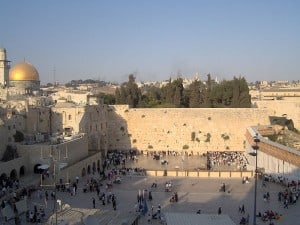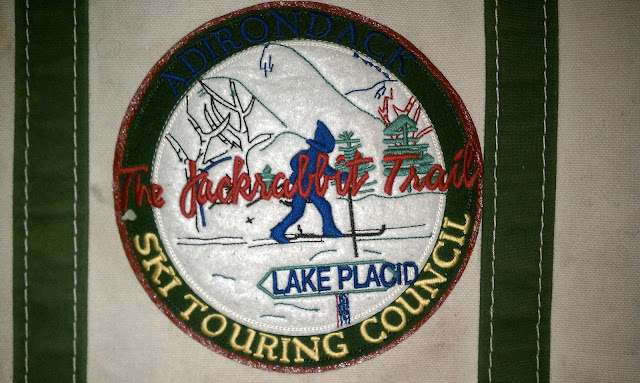People have been asking me to explain more about my reference to the 9 days of mourning that began today. It is a rainy day here in Philadelphia so it is sort of setting the tone for somberness. Instead of my own drivel which, as you know is verbose and long-winded, I am going to share with you a recent letter I received from the found of Hazon, Nigel Savage. Earlier this year, I sang on and on about this wonderful Jewish environmental organization, so it comes as no surprise to me that Nigel offers a well-balanced, palatable, Torah-based look into and explanation of this auspicious time in on the calendar. I have referenced recently two other Nigels who I feel have made excellent contributions to society. One is a Nigel of fiction, the other is a Nigel of soul.
Without further delay, I introduce to you Mr. Nigel Savage:
July 19, 2012 / 29 Tamuz 5772
Hazon’s theme quote, from the late Reb Shlomo Carlebach z”l, is “The Torah is a commentary on the world, and the world is a commentary on the Torah.” It’s a quote that means, essentially, if Jewish tradition matters at all, it has to be in a relationship with the world in which we live. We see this easily in relationship to Passover – themes of slavery and freedom are on the one hand traditional ideas in Jewish liturgy, and also animate contemporary discussions about food justice or Darfur or women’s rights. But it’s more of a challenge to see this play out 365 days a year. In what ways is the Torah a commentary on our daily lives, and how does the world we live in shift our understanding of Jewish teachings and Jewish ideas?

Tisha B’Av commemorates the destruction of the temple in Jerusalem and other tragedies in Jewish tradition (photo via Wikimedia Commons)
We’re now in the period of the Three Weeks, a period of mourning between the 17th of Tammuz and the 9th of Av. It’s a part of the Jewish calendar that is only minimally observed in the non-Orthodox Jewish community today. At a basic and traditional level, the period is marked by restrictions on eating meat and drinking wine. Most Jews haven’t heard of it, and for those who have it is often not a deeply meaningful part of the tradition. How could or should we make sense of it?
On one level, it prompts me to think that we have something to learn about mourning, and the rhythm from mourning to joy – played out in Jewish tradition in the move from the fast of Esther to the joyousness of Purim; the fast of the first born, and then the great celebration of Pesach. I am always struck when I am in Israel over Yom Ha Shoah how completely the country comes to standstill. The restaurants close, the cars stop, people stop, the siren wails. There is literally a nationwide moment of mourning. The same on Yom Hazikaron – memorial day – and then the transition into deep joy with the celebrations of Yom Ha’Atzmaut. The ancient move from commemoration to celebration informs those two new days.
I’m struck that contemporary western society on a whole does mourning and commemoration quite badly, and perhaps that also makes it hard for us truly to celebrate.
9/11 in New York somehow doesn’t feel quite right to me. Already the commemoration seems formulaic, the day for most New Yorkers passes as normal. If it were up to me, feeling the rhythms and wisdom of Jewish tradition, and wishing to apply them more widely in our world, I’d do it differently. In the morning, when the towers were struck, we’d sound a siren, and the city would stop, twice, each time for 2 minutes – a powerful moment of memory and commemoration. In the morning the ceremonies at the site, reading the names. And then from noon, the biggest streetfair in the world in Manhattan – a great celebration of life and light and creativity and energy and people and traditions and pluralism, the celebration of the antithesis of what those people came to do. A positive affirmation of New York City and being alive and all that we enjoy as free people in this country.
This is some of what I think of as I think about Tisha b’Av, the 9 days, Shabbat Hazon – in 8 days time, this year actually the day of the 9th of Av, but the fast being commemorated the next day. I learned from Dr. Michael Kagan the way in which the internal architecture of Tisha b’Av mimics our mortality, prompts us to think about that. And then in the afternoon of tisha b’av we start to come to life; we great friends, we resume normal ritual. Our tradition teaches that mashiach – the messiah – will be born on the afternoon of Tisha b’Av. And then 6 days later, at the full moon, we have Tu B’Av, the celebration of love and physicality.
Tisha B’Av has this rhythm as well – 6 days after the day we mourn the destruction of the Temple and a whole host of other calamities throughout Jewish history, is the holiday of Tu B’Av, a lovers holiday where young people would go out into the fields in borrowed clothes (so no one would know who is rich or poor) and essentially have a, literal, romp in the hay.
We’ve lost touch with the mourning of Tisha B’Av, and the celebration of Tu B’Av. Some people argue that we live in a time of relative peace – and indeed, the State of Israel exists as a soverign nation – so do we in fact need Tisha B’Av any more? What does a period of commemoration and mourning look like in a time of relative peace? But I write this the day after a group of Israeli tourists were murdered in Bulgaria for the crime of being citizens of the state of Israel. We do live in relative peace and freedom, but the commemorations are still needed, until the world truly is at peace.
So I leave you with questions and thoughts and invitations. What do we mourn, what have we lost, what causes us pain, what are our destructions? As individuals, families, as the Jewish people, as citizens of the world? What and how do we remember those losses? And what, arising from the ashes, do we choose to celebrate? Where lies our hope and our belief, and how do we reflect that also?
I write this as I head out to Madison to rejoin our Cross-USA riders – cycling hard in 100 degree weather, because they choose to push themselves, because they choose to be in community, and because they seek not only to have the experience of a lifetime but also to do good – to learn and to teach – as they do so.
Follow this link to see a 2-minute clip of some of our riders on NBC last week. And this link to join us this week in Madison, Oconomowo, River Hills, Glencoe, Geneva, and Chicago.
Shabbat Shalom,

Nigel Savage
Executive Director, Hazon
Executive Director, Hazon

.jpg)








